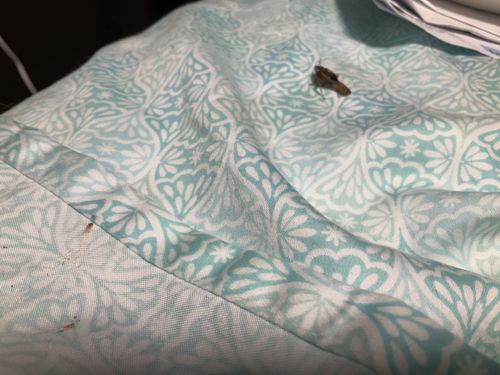Ant or possibly small beetle
Scientific Name: Formicidae (for Ant) or various families within Coleoptera (for Beetle)
Order & Family: Hymenoptera (for Ant) or Coleoptera (for Beetle)
Size: Typically 2mm-20mm for ants, and widely variable for beetles (from less than 1mm to over 150mm). The insect in the image appears to be on the smaller side, likely a few millimeters.

Natural Habitat
Ants are found almost everywhere on land. Beetles are also very diverse and found in nearly all habitats. Given the image context, it appears to be indoors.
Diet & Feeding
Ants have a highly varied diet depending on the species, including other insects, honeydew, seeds, fungi, and household crumbs. Beetles also have diverse diets: some are herbivorous, some carnivorous, and some scavengers. Without clearer identification, a specific diet cannot be pinpointed.
Behavior Patterns
Ants are social insects living in colonies with distinct castes, foraging for food and constructing nests. Beetles have a complete metamorphosis (egg, larva, pupa, adult) and behavior varies greatly by species; many are nocturnal, some are agricultural pests, others are beneficial predators. The insect in the image is small and appears to be solitary, which can be consistent with either, but no complex behavior is observable.
Risks & Benefits
Ants can be household pests, contaminating food and in some cases, delivering painful bites or stings. Overall, ants are beneficial to ecosystems through soil aeration, seed dispersal, and pest control. Most small beetles are harmless to humans, though some can be household pests (e.g., pantry beetles) or plant pests. Many beetles are beneficial as pollinators or decomposers.
Identified on: 9/27/2025